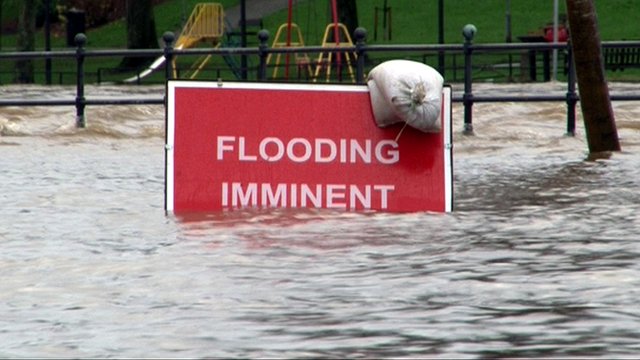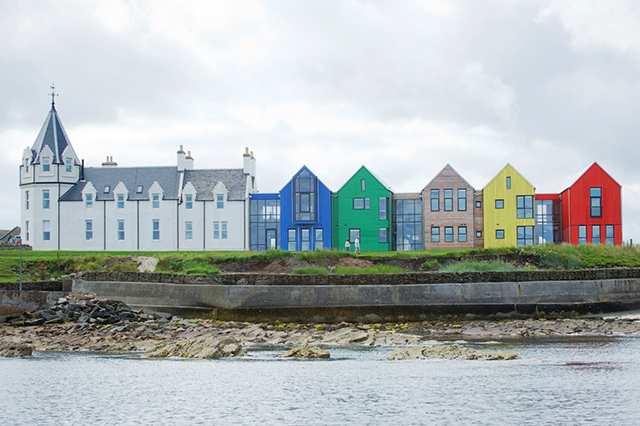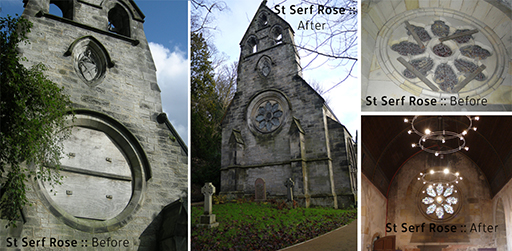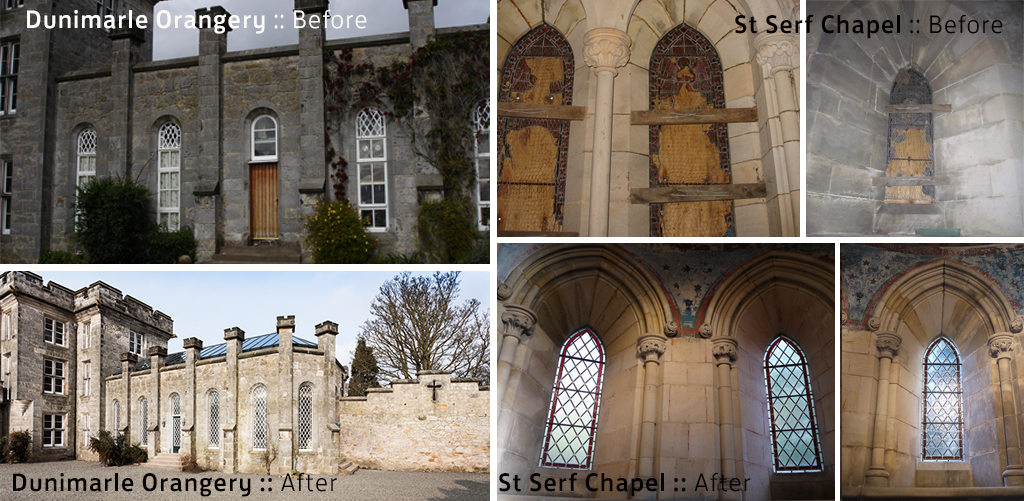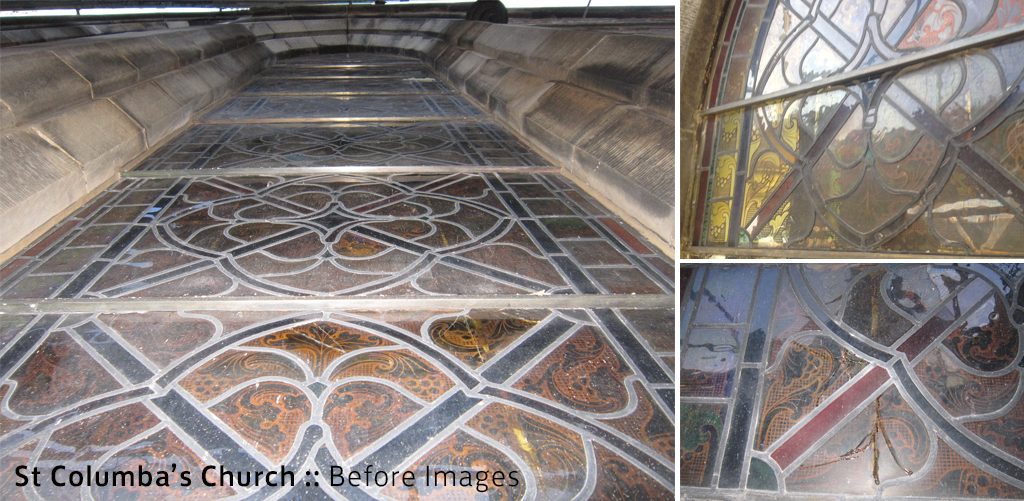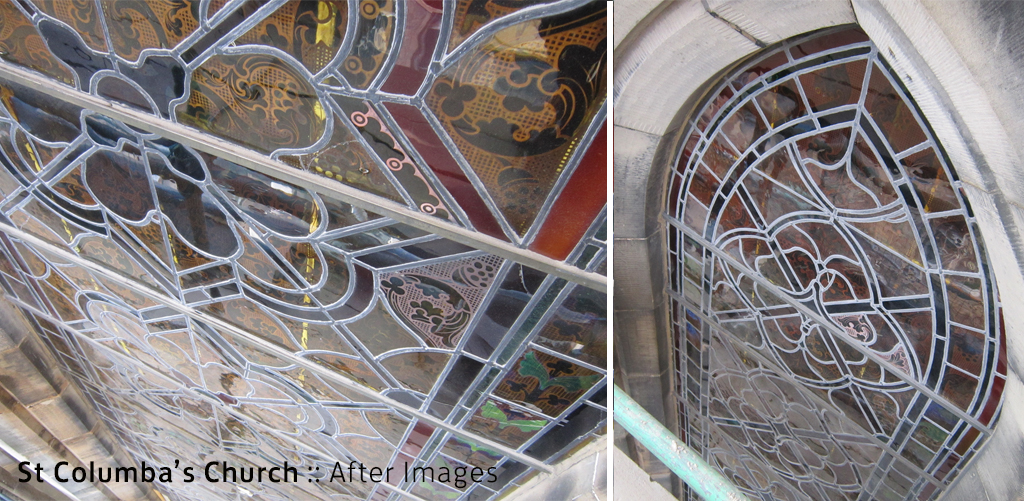Ian McKee : We are GLM
Flooding - A Threat to our Built Environment
January 14th, 2016
By David Gibbon
-RICS Conservation Accredited Building Surveyor
I’ve been banging on about climate change for years. I’ve even given a couple of talks to RICS conferences drawing attention to the connection between climate change and flooding, particularly as it affects surveyors and the land and buildings we advise on. Now flooding, flood damage and leaky buildings are subjects that are right up at the top of the agenda.
Guaranteed nonsense
Wherever there is damage to property there tends to be two competing ideologies. There’s always a rush of commercial operators with guaranteed solutions. Radical surgery and highly toxic chemicals is the industry’s response to Dry Rot. Cement was the favoured answer to a multitude of construction problems for over a century. Pumping foam into cavities is another craze and “maintenance free” plastic windows another. In every case I ask myself: is there an environmentally friendlier approach? Are we being railroaded by commercial interests?
We are so taken in. A couple of decades ago there was a great fashion in the building industry for component “systems” backed by elaborate warranties. There were cleverly marketed, comprehensively guaranteed and scientifically engineered rainscreens and wonderfully complex roof glazing systems. They’ve all got buckets under them now.
We ain’t seen nothing yet
Flooding has produced droves of “experts”. They are the “dredging” brigade. They can talk nonsense from morning to night without drawing breath. The truth is that flooding has two parts to it: 1) it is getting much much worse due to human generated climate change of which we ain’t seen nothing yet and 2) it is made immeasurably worse by stupid land management that seeks to suppress nature rather than work with it. And by suppressed nature I mean hillsides bare of woodland and kept in that state by subsidised sheep, deer allowed to get completely out of control and grouse moors managed on behalf of repulsive plutocrats. I mean rivers and streams converted into agricultural drainage channels. I mean all the things that George Mombiot, quite correctly, rages about in the Guardian.
Nature’s way
Meandering rivers with riparian edges reinforced by coppiced tree roots and lots of obstructions to slow and absorb the flow can, of course, be created to mitigate flash floods and there are some great examples where huge sums have been expended to achieve very positive results by this means. But they can be had for free along with the cascade of resulting biodiversity, of agricultural pollution filtration and breakdown, of drought reduction and the enrichment of rivers to the benefit of fish by the simple measure of reintroducing the keystone species that did all this from the last Ice Age until a few generations ago: Castor Fiber – the European beaver.
Leaky buildings
We are beset with them. The climate changed weather systems we now face are driving water straight through the walls of many of our traditional buildings and newer ones too. They now often leak like sieves. Finding answers is a painstaking process. Almost every day we discover something new, a new problem and hopefully a new solution.
A Case for Existing Buildings in the Future of Design
August 11th, 2015By David Gibbon -- RICS Conservation Accredited Building Surveryor, david.gibbon@weareglm.com
There's a great big flaw in the way most people look at buildings. They see them as disposable assets with a limited lifetime but the truth is that, with maintenance and adaptation, very few need be.
I watched Kevin McCloud's programme called "Living in the Country” (Channel 4 30th July 2015) when he went through some projects he had previously reviewed that demonstrated the power of great design. He showed restored and converted barns and restored castles as well as fabulous new houses, some that radically reinterpreted themes of traditional architecture and some that stood out as boldly contemporary. One was also able to generate enough power that its owners that, far from having to buy energy, they were actually receiving an income of £2000 a year from what the house produced.
The subtext of this whole programme was that here is the future, a new way of living, a new way of designing and building and a possible alternative way to go towards a renewable world. In fairness Kevin also pointed out what extreme efforts, difficulties and privations many of his subjects had gone through to realise their dreams.
But to be realistic can Kevin McCloud lead apply to more than a tiny proportion of the overall stock of housing? We should, of course, push to improve the energy performance of all our buildings and the process of adapting them to evolving lifestyles will always continue. However the buildings we already have contain a vast stock of embodied energy and non-renewable materials and skill and history. It is inconceivable that they should all be replaced with new buildings, even in the very long term. Well maintained buildings will last almost indefinitely - of course they will need a new roof covering at intervals and anyone stupid enough to replace sound or repairable timber windows, made from wood from virgin forests, with uPVC windows will have to replace them every 30 or 40 years or so.
So the future I envision is rather less dramatic that Kevin McCloud’s. There will I hope always be a place for a few radical new buildings and startlingly repurposed old ones. I fervently hope this because this is what we do and I thank Kevin McCloud for raising the public’s awareness of the great benefits to be got from great design. But I am certain that there will also always be a place for the vast majority of existing buildings which, over time, will require to be carefully maintained and from time to time, made to work better, adapted and upgraded, and we do that too.
Money is too Tight: Secrets to Successful Hotel Refurbs
August 5th, 2015
Refurbishing any building on a budget is a fraught business with ever present tensions between time, cost and quality – but when the business is a small hotel, the pressure is magnified tenfold.
With many small hotels facing significant operational challenges from staffing to marketing, occupancy to seasonality, the decision to refurbish is a daunting one. How you spend the money really depends on two things: What state is the building fabric and infrastructure in; and how much do you want to change the look and feel of the guest experience?
For most hotel operators the focus will be on the latter – after all, it’s what the guests interact with that creates the return, right? Well yes and no. Focusing all of the budget on interior design, fixtures, fittings and equipment (FF&E), the latest in-room entertainment and a great bar and dining room is all very well but, when the showers are turned on at 7.30 in the morning and only a dribble of lukewarm water comes out, what will the guest’s Trip Advisor comments say?
Hotel infrastructure is not very exciting. Boilers and pumps and unvented hot water cylinders or plate heat exchangers are not very sexy, but getting these things right will make all the difference to the guest experience. Of course, biomass boilers can be quite exciting especially if you can harness the RHI (Renewable Heat Initiative) and enjoy oodles of heating and hot water and get paid to do it!
Then there is the building fabric to consider. Is there any point spending thousands on painting and wall coverings, carpets and furniture if the roof leaks every time it rains? Backlog maintenance issues and plain old ageing has to be addressed sometime, especially if business interruption is to be minimised and the asset value of your building maintained. It is a question of prioritising and finding the optimum balance between fabric, infrastructure and interior design, decoration and FF&E spend.
Whether you can do all this yourself depends on a number of factors. This includes the level of investment you intend to commit, your experience of planning and managing a building refurbishment project, the time scale you plan to do it in, whether you will keep the hotel trading during the work and the information you have to hand to help you decide how to spend your money.
My advice would be take a holistic view of the situation and consider all the factors before deciding how to carve up your budget. Tempting as it may be, don’t jump in to the interior design too early as it’s easy to get carried away and very difficult later on to cut this back to pay for a new roof or boiler. A chartered building surveyor (find one through RICS) will help you plan a complete project by first undertaking a building condition survey of the fabric and services infrastructure.
They will then work with you to identify your business objectives and prioritise what needs to be done to deliver the best outcome in your particular circumstances. This key appointment will help you make and manage other appointments such as designers, architects, engineers and contractors and may often be the only person you need to deliver the perfect outcome.
Ian McKee is a Chartered Building Surveyor, Chairman of RICS Scotland and Managing Director of GLM. He is a leading expert in the master planning and development of leisure and tourism related destinations with a niche in the refurbishment and adaptive reuse of existing buildings.
A Closer Look at Stained Glass Conservation
May 4th, 2015By David Gibbon MRICS MCABE
Before the art of creating larger panes of glass was perfected small pieces of glass connected together with lead strips was the best our forebears had. Subsequently leaded windows and stained glass have often been revived and they give an artistic feel to what might otherwise be a flat and lifeless plate glass window. As a consequence we often come across leaky, cracked, bowed and vandalised leaded windows and when we do we rely on the considerable skill of experts to bring them back to life. There are a few around.
There can be few more satisfying building conservation outcomes than a well put together leaded window in excellent repair.
At St Serf’s Chapel near Culross we were faced with a whole building’s worth of stained glass that was severely vandalised. Only a high level rose window remained to any extent and it had been badly damaged. The decision was taken to repair the rose window and to box up what remained of the other windows and store them on site and then to reglaze the window openings with plain diamond pattern leaded windows with just a hint of coloured glass in some of them. If, in years to come, someone felt that the original windows were worth restoring the building would have been protected meantime. However the remaining evidence was scant and we took the view that restoration would have been speculative at best.
New diamond pane windows were made and installed and the rose window was repaired with great skill by Roland Mitton.
At A Listed Dunimarle Castle we had to deal with an Orangery that had formerly had “zinc came” windows. Zinc cames are T shaped zinc profiles that were at one time used to glaze many buildings in Scotland but the technology is difficult for modern tradesmen to reproduce. Unlike leaded windows the glass is puttied into place externally and then the cames are painted. This gives the windows a distinctive appearance very different from leaded windows.
The windows in this case had been butchered with timber frame inserts when the Orangery was turned into a caretaker’s flat but our instructions were to turn it back into an Orangery. Scottish Stained Glass Studios rose to the challenge magnificently. They arranged to have T shaped glazing bars made to the size of the original zinc but in a stiffer than average alloy of lead and to brace the windows with well placed bronze bars. The end result is a set of windows with perfectly designed glazing that beautifully sets off the restored building. They also made new leaded lights along the same principles to restore the zinc came windows in a turret.
The stained glass windows at A Listed St Columba’s Free Church of Scotland on Johnstone Terrace in Edinburgh’s Royal Mile had been inexpertly repaired in the past but … [ask Louise] have made an excellent job of putting them back into first class order.
City of Edinburgh Council's Discredited Common Repairs Scheme
March 3rd, 2015
By David Gibbon
City of Edinburgh Council is planning to reinstate their discredited common repairs scheme. I cannot understand why there has been no public inquiry into what has gone wrong.
This is a matter of national, not simply local interest because the problems associated with the maintenance of common property is a national one. Edinburgh's unique statutory powers of enforcement in the repair of private property have brought disgrace on the council. For them to contemplate reviving the scheme now is quite shocking.
At one time I was rather supportive of CEC's common repairs scheme as it appeared to overcome the problem of owners refusing to share in the cost of essential repairs and held out the prospect of Edinburgh's historic building fabric being well maintained. In practice, however, it proved to have a number of major shortcomings. Worst of these was that it took responsibility away from owners and allowed them to shrug their shoulders and allow "them" to do what they should have been doing for themselves.
Instead of operating cooperatively in their mutual interests and in a neighbourly spirit, they were able to sit back and be obnoxious to one another and to the council officials, contractors and consultants involved. Bad behaviour bred more and more bad behaviour. The system also encouraged a high-handed, arrogant and disdainful approach by council officials not helped by the antagonism inherent in an "enforcement" situation.
The statutory power that the council had been granted only allowed them to repair, not in any way to improve the buildings they were dealing with. This created all sorts of illogical situations that were in no-one's best interests but could not be resolved in the absence of co-operation and communication. In point of fact the reaction of the officials was to ride roughshod over their statutory remit and invent an often arbitrary, and as we now see, illegal, rules-system. This was devised by low-grade officials lacking in any professional perspective.
The system was heavily constrained by EU procurement regulations that were quite cleverly transformed into sort of framework agreements, but then corruption set in and contractors like Action, that were no part of the framework started to get work and to distribute largesse to the officials. However whether the inflexibilities surrounding the EU procurement rules were really to the individual owner's benefit is questionable. The system became vastly complicated and although there were some economies of scale they were no doubt counterbalanced by the associated overblown bureaucracy.
If owners could employ surveyors and contractors on their own terms very much more bespoke and light touch procurement arrangements could be provided.
Projects often escalated because there was a presumption against carrying out detailed surveys before work was embarked on. Again if owners commissioned their own works they could decide for themselves what level of risk they were prepared to trade off for upfront costs.
Managing a similar in-house CEC scheme but this time with properly qualified professionals might overcome some, but certainly not all of the problems that were encountered previously. However the situation will always be distorted in favour of the council as long as they are allowed to use their powers of enforcement, their access to the database of owners names and addresses and their ability not to charge VAT on building repair and maintenance projects.
I think they have disgraced themselves to such an extent that they should be stripped of these powers. I don't wish to see anyone charged VAT on the repair of buildings but it is a ridiculous market distortion that this concession should only be available through the council.
Only central government can really sort this mess out and step No 1 would be to hold a properly constituted Public Inquiry.
It is very probable that the council will plough ahead regardless and that they will repeat some of the same mistakes and a whole lot more besides because that is how our council behaves, but in my opinion the system is unfixable. The Edinburgh District Council Confirmation Act is not fit for purpose. This is not the way to go.
David Gibbon is a Founder and Director at GLM and an RICS Conservation Accredited Building Surveyor specialising in the care and conservation of historic buildings. He regularly provides expert comment on the common repairs situation in Edinburgh.


